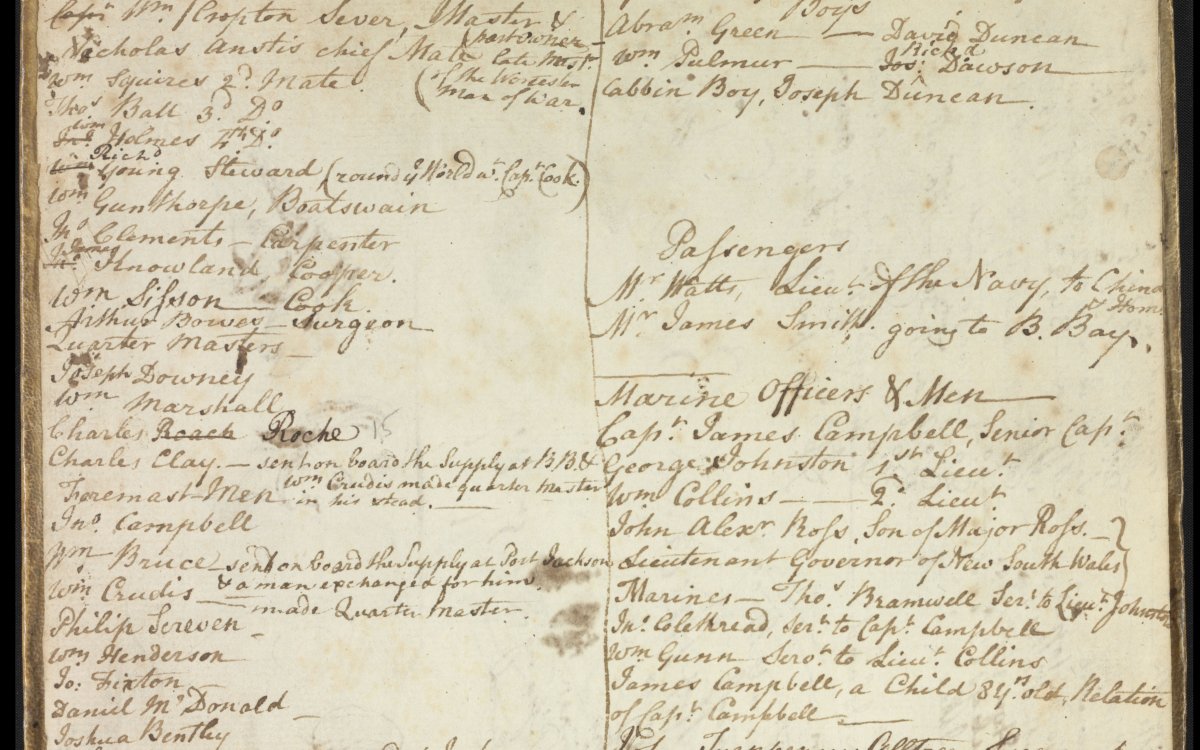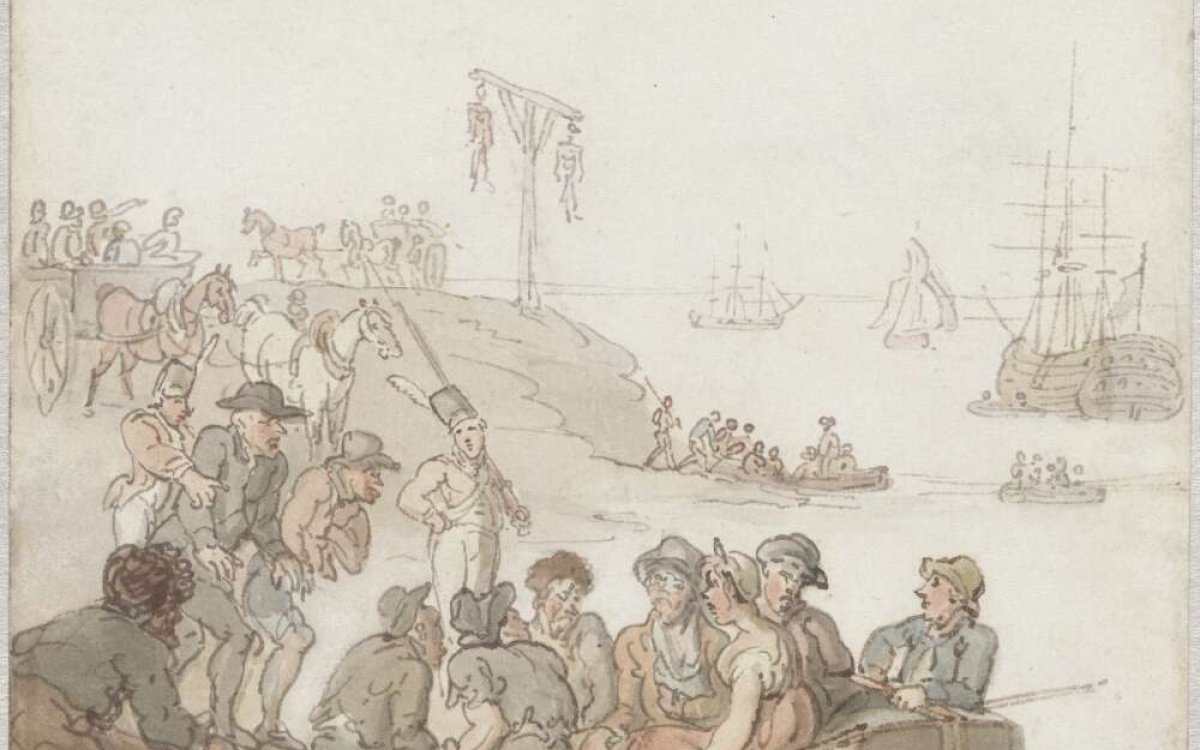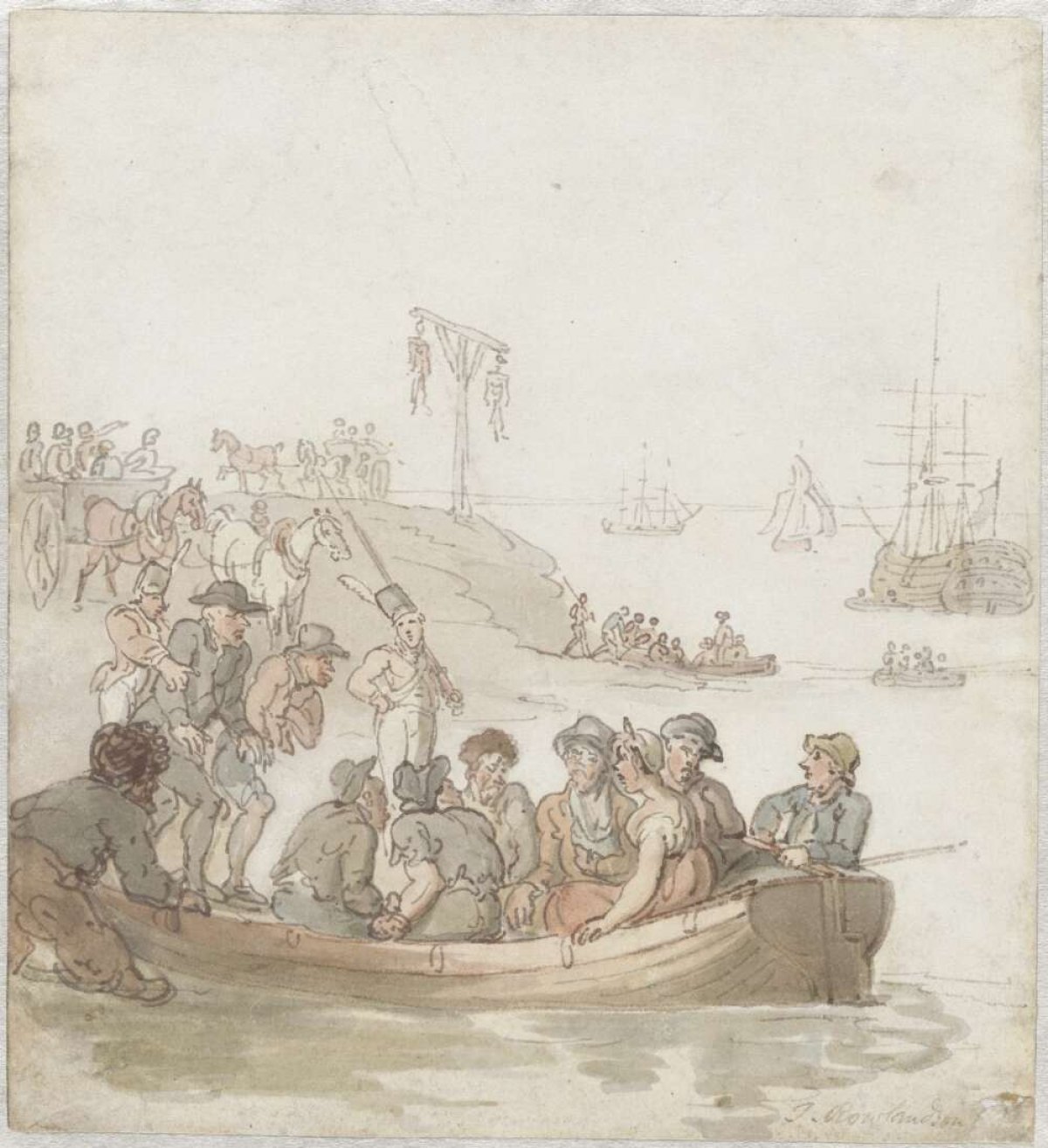Transportation to the Australian colonies began in 1788 when the First Fleet, carrying between 750 and 780 convicts plus 550 crew, soldiers and family members, landed at Sydney Cove after an eight-month voyage. Over the next 80 years, British courts sentenced more than 160,000 convicts to transportation to Australia.
Arthur Bowes Smyth (1750-1790) was the ship’s surgeon aboard the Lady Penrhyn, one of the ships in the First Fleet. In his journal, Smyth wrote of the harsh conditions aboard the Lady Penrhyn whose passengers included 101 female convicts. The names of the convicts are listed on pages 17─20 of Smyth’s journal.

Smyth, Arthur Bowes, Journal of Arthur Bowes Smyth, 1787 March 22-1789 August, 1787, http://nla.gov.au/nla.obj-233345951
1. This is the fourth page from the journal that Arthur Bowes Smyth kept during his voyage to Australia on the Lady Penrhyn (one of the ships of the First Fleet). Share the page with your students and invite them to use ‘history detective’ skills to find the following information:
- What was the Lady Penrhyn?
- Can you find the list of passengers? Name one of them.
- Can you find the list of marine officers and men? Name one of them.
- Can you find the list of boys? How many were there?
- Listed next to people’s names, can you find some of the jobs they did? List two of the jobs.
- The lists on this page do not include the names of most of the people on board the Lady Penrhyn. Who else might have been on board? Why might their names have been listed separately from those on this page?
Use the information the students have found to brainstorm ideas about why the First Fleet came to Australia. You may like to use the artwork Convicts Embarking for Botany Bay, painted by Thomas Rowlandson (1756─1827) in 1800, to stimulate the brainstorm.

Rowlandson, Thomas, 1756-1827. (1800). [Convicts embarking for Botany Bay] [picture] / T. Rowlandson. http://nla.gov.au/nla.obj-135232630
English artist Thomas Rowlandson depicts convicts being loaded onto a rowing boat at the beginning of a long voyage to the other side of the world. The two corpses hanging from a gibbet are a gruesome reminder of the alternative to transportation.
English artist Thomas Rowlandson depicts convicts being loaded onto a rowing boat at the beginning of a long voyage to the other side of the world. The two corpses hanging from a gibbet are a gruesome reminder of the alternative to transportation.
2. Read the following (edited) extracts from Bowes Smyth’s journal between March 1787 and January 1788 with your students.
Friday 22 March came on board the ship at the Mother-bank near Portsmouth (page 5)
Friday 20th a fine day with a fresh breeze—a large and beautiful rainbow seen this day about 8 o’clock without any rain preceding its appearance, which the seamen say is a sign of the wind. Several large dolphins seen astern which would not take the baits (page 33)
Wednesday 19 a very wet day and frequent very violent squalls of wind, about 11 o’clock a.m. some person fell overboard from the Charlotte … have not learnt who fell overboard or if they were saved (page 58)
Saturday 1st December This day one of the convicts on board our ship (Margarett Brown) scalded her foot very bad. Tis very extraordinary how very healthy the convicts on board this ship in particular, and indeed in the fleet in general have been (page 78)
Tuesday 25 December 1787 Xmas Day We are now about two thousand miles distant from the South Cape of New Holland, or Van Diemen’s Land, or otherwise Adventure Bay, with a most noble breeze which carries us at 8½ knots per hour, which we hope will enable us to see land in about a fortnight (page 97)
26 January … about 7 o’clock p.m. we reach the mouth of Broken Bay, Port Jackson, and sailed up into the cove where the settlement is to be made … the finest terraces lawns and grottos with distinct plantations of the tallest and most stately trees I ever saw in any noble man’s gardens in England cannot exceed in beauty those which nature now presented to our view (page 131)
As a class, discuss what these extracts tell us. Ask your students the following questions:
- What were some of the challenges faced by the people on the First Fleet during their voyage to Australia?
- Why do you think the people on the ships were trying to bait the dolphins?
- What pleasant experiences does Bowes Smyth write about in these extracts from his journal?
- What was Bowes Smyth’s first impression of Sydney Cove?
3. The experiences of the convicts on the Lady Penrhyn would have been very different to Bowes Smyth’s experience as ship’s surgeon. Ask your students to imagine they are convicts on board the ship. Each student should write four journal entries that show what the convicts may have experienced during the voyage from Portsmouth to Sydney.
Other Treasures sources that relate to the concepts explored in this source include: Early settlement, Strange creatures

